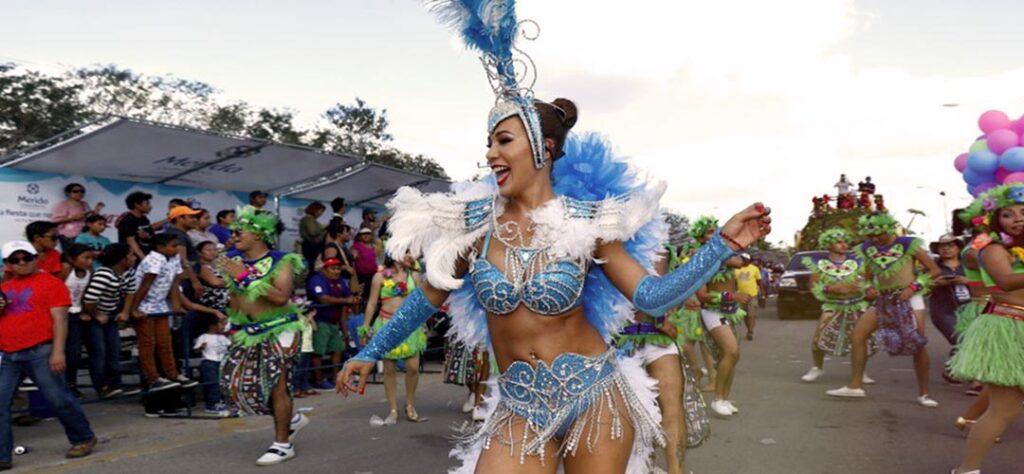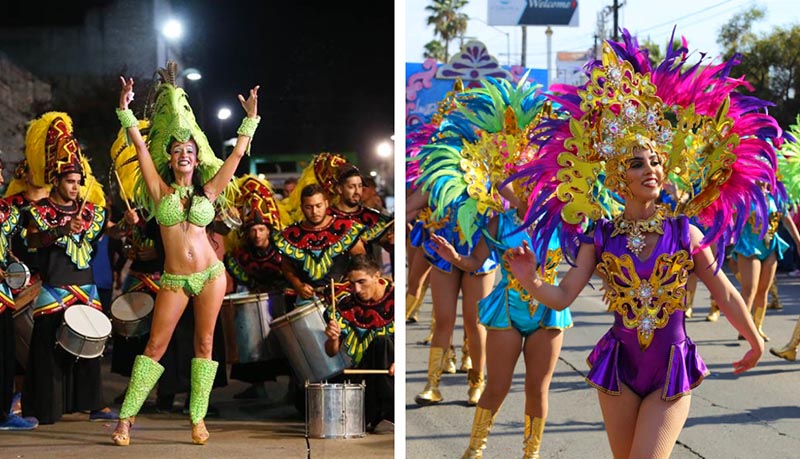Imagine immersing yourself in the vibrant colors, infectious music, and electrifying energy of Mexico’s world-renowned carnival celebrations. A whirlwind of excitement and cultural significance awaits you as you witness breathtaking parades, flamboyant costumes, and thrilling activities that have been passed down through generations. From the iconic Carnival of Veracruz to the extravagant festivities in Mazatlan and Oaxaca, Mexico’s carnivals are not just events; they are experiences that will leave you exhilarated and craving for more. So put on your dancing shoes, grab a mask, and get ready to be swept away by the exhilarating thrills of Mexico’s famous carnival celebrations.

History of Mexican Carnival
Origins of Mexican Carnival
Mexican Carnival has a rich and vibrant history that dates back centuries. It traces its origins to the ancient indigenous civilizations that inhabited the region long before the arrival of the Spanish conquistadors. These pre-Hispanic cultures, such as the Aztecs and the Maya, had their own unique forms of celebrations and rituals to honor their deities and mark important events.
When the Spanish colonized Mexico in the 16th century, they brought with them the Catholic traditions and festivities, which strongly influenced the evolution of Mexican Carnival. The blending of indigenous traditions with European customs resulted in a unique and colorful celebration that would become an integral part of Mexico’s cultural heritage.
Evolution of Mexican Carnival
Over the years, Mexican Carnival has evolved and adapted to changing social, political, and religious influences. Initially, it was primarily a religious celebration that took place before the Catholic season of Lent. However, as time went on, it transformed into a more secular and community-oriented event, incorporating elements of music, dance, theater, and street performances.
In the early 20th century, Mexican Carnival became more theatrical and elaborate, with the introduction of floats, costumes, and parades. Today, it is celebrated with great enthusiasm and creativity throughout the country, showcasing the vibrant diversity of Mexican culture.
Influence of European Carnival traditions
The Carnival traditions brought to Mexico by the Spanish colonizers were heavily influenced by the European Carnival celebrations. In particular, the Spanish Mardi Gras and the Italian Carnival of Venice played significant roles in shaping the Mexican Carnival we know today.
The opulent masks and costumes of the Venetian Carnival, with their intricate designs and luxurious materials, inspired Mexican artisans to create their own unique masks and costumes. These elaborate disguises, known as “alebrijes,” became an integral part of Mexican Carnival, adding a touch of mystery and enchantment to the festivities.
Similarly, the music and dance traditions from Spain and other European countries intertwined with the vibrant rhythms and melodies of indigenous Mexican music, creating a fusion of styles that can be heard and seen during Carnival celebrations across the country.
Festivities and Locations
Popular Mexican Carnival destinations
Mexico is a country known for its rich cultural heritage, and when it comes to Carnival celebrations, there are several destinations that stand out. One of the most famous Carnival destinations in Mexico is Veracruz, located on the Gulf Coast. Veracruz is renowned for its lively street parades, energetic music, and colorful costumes. It attracts both locals and tourists who come to experience the festive atmosphere and immerse themselves in the traditions of Mexican Carnival.
Another popular destination for Carnival enthusiasts is Mazatlán, on the Pacific Coast. Mazatlán’s Carnival is known for its grandeur and extravagance, with elaborate floats, fireworks, and international music acts. The city comes alive during this time, drawing huge crowds from near and far.
Other notable Mexican Carnival destinations include La Paz, Campeche, and Merida, each offering its own unique twist on the festivities.
Unique carnival celebrations in different regions
Mexico is a country known for its regional diversity, and this is also evident in the various Carnival celebrations that take place across the country. Each region has its own distinct customs, traditions, and unique elements that make their Carnival celebrations stand out.
For example, in Oaxaca, Carnival is celebrated with the “Martes de Brujas” (Witches’ Tuesday) parade, where participants dress up as witches and wander through the streets, casting spells and spreading joy. In Chiapas, the indigenous communities celebrate with traditional dances and processions, showcasing their rich cultural heritage.
In the Yucatan Peninsula, Carnival takes on a more religious tone, with processions honoring the Virgin Mary and the saints. These processions are accompanied by traditional music and dance, creating a captivating atmosphere that is both spiritual and festive.
Notable street parades and events
Street parades are a highlight of Mexican Carnival celebrations, offering a chance to witness the true spirit and energy of the festivities. One of the most renowned street parades in Mexico is the “Desfile de Carnaval” in Veracruz. This parade features colorful floats adorned with intricate designs, lively music bands, and enthusiastic dancers who showcase their skills and entertain the crowds.
Another notable event is the “Batalla de las Flores” (Battle of the Flowers) in Mazatlán. As the name suggests, this event includes a procession of floats decorated with vibrant flowers, and participants throw flowers into the crowd, creating a beautiful, fragrant spectacle.
Other cities, such as La Paz and Campeche, also organize their own street parades, each with its own unique charm and atmosphere. These parades are a sight to behold, with participants wearing impressive costumes and masks, dancing to the rhythm of traditional music and captivating the audience with their performances.
Traditional Costumes and Masks
Importance of costumes in Mexican Carnival
Costumes play a central role in Mexican Carnival, as they allow participants to transform themselves into different characters, mythological beings, or historical figures. The art of costume-making has been passed down through generations, with skilled artisans using a variety of materials and techniques to create unique and eye-catching designs.
Wearing a costume during Carnival allows people to step outside of their everyday lives and embrace a sense of playfulness and creativity. It is a chance to become someone else for a day, to let go of inhibitions, and to be part of a larger shared experience that celebrates Mexico’s cultural heritage.
Variety of traditional costumes
Mexican Carnival boasts a wide array of traditional costumes, each with its own unique style and symbolism. From the colorful and intricate outfits worn by the “chinas poblanas” in Puebla to the feathered headdresses and vibrant skirts of the “concheros” in Mexico City, there is a costume to suit every taste and preference.
In Veracruz, the “jarocho” costume is a popular choice, consisting of white pants, a white shirt, and a straw hat adorned with ribbons and flowers. This attire reflects the region’s coastal identity and pays homage to the Afro-Caribbean influences that shaped Veracruz’s culture.
In Mazatlán, the “Sinaloa” costume is a beloved tradition, featuring a wide-brimmed hat, a colorful silk shirt, and embroidered pants. This costume reflects the region’s cowboy culture and is often accompanied by a lively dance known as the “zapateado.”
Symbolism behind masks and their significance
Masks are another important element of Mexican Carnival, with each design holding its own symbolic meaning. Masks can represent different characters, animals, or mythical beings, and are often crafted with intricate detail and vibrant colors.
One of the most iconic masks is the “Lucha Libre” mask, inspired by Mexico’s beloved wrestling tradition. These masks are often brightly colored, with exaggerated features and bold designs. They embody the spirit of Mexican wrestling, which combines athleticism, showmanship, and a sense of theatricality.
Another significant mask is the “Calavera” mask, inspired by the Dia de los Muertos (Day of the Dead) tradition. These masks are adorned with intricate skull designs, emphasizing the cyclical nature of life and death. They serve as a reminder to celebrate and honor our ancestors, while also embracing the joy of the present moment.
Masks not only add visual interest to Mexican Carnival but also allow participants to adopt different personas and create a sense of mystique and intrigue.
Traditional Music and Dance
Role of music and dance in Mexican Carnival
Music and dance are integral components of Mexican Carnival, providing the rhythm and energy that fuels the festivities. From catchy tunes to infectious rhythms, the music of Mexican Carnival embodies the joy, passion, and exuberance of the celebration.
Music serves as the heartbeat of Carnival, encouraging participants and spectators alike to dance, sing, and let loose. Whether it’s the lively beats of a mariachi band, the infectious melodies of a marimba ensemble, or the pulsating rhythms of a samba group, the music sets the stage for a truly immersive and unforgettable experience.
Dance, on the other hand, is a physical expression of the music, allowing participants to showcase their agility, grace, and creativity. From traditional folk dances, such as the “Jarabe Tapatío” and the “Danza de los 7 Velos,” to more contemporary styles like salsa and cumbia, Mexican Carnival offers a vibrant tapestry of dance forms for everyone to enjoy.
Different genres and rhythms
Mexican Carnival is known for its diverse musical genres and rhythms, each region boasting its own unique style and sound. Mariachi music, with its lively trumpets, guitars, and vihuelas, is often associated with Mexican celebrations and can be heard in various Carnival events across the country.
In Veracruz, the “son jarocho” is a popular music genre characterized by lively rhythms and the use of traditional instruments like the jarana and the requinto. This genre, deeply rooted in Afro-Caribbean influences, is often accompanied by energetic dancing that showcases the region’s vibrant culture.
In the Yucatan Peninsula, the “trova” music takes center stage during Carnival. This genre is characterized by beautiful melodies and poetic lyrics that often reflect the region’s rich history and natural beauty. The trova music sets the mood for the elegant and graceful dance styles that are performed during Carnival in this region.
Famous dance styles showcased during Carnival
Carnival in Mexico features a wide range of dance styles, each with its own distinct movements, costumes, and rhythms. One of the most famous dance styles showcased during Carnival is the traditional “Danza de los Viejitos” (Dance of the Little Old Men). Originating from Michoacán, this dance depicts elderly men engaging in playful and humorous movements, while wearing traditional outfits and masks.
Another popular dance style is the “Danza de los Diablos” (Dance of the Devils), which can be found in various regions across Mexico. This dance incorporates elaborate costumes, masks, and theatrical performances to portray the struggle between good and evil. The dancers, known as “diablos,” leap and twirl to the rhythm of the music, showcasing their agility and captivating the audience with their acrobatic feats.
Other dance styles, such as the “Danza de los Tecuanes,” the “Danza de los Zancudos,” and the “Danza de los Tigrillos,” can be seen in different regions of Mexico during Carnival. Each dance style offers a unique glimpse into the cultural traditions and historical narratives that shape Mexico’s rich heritage.
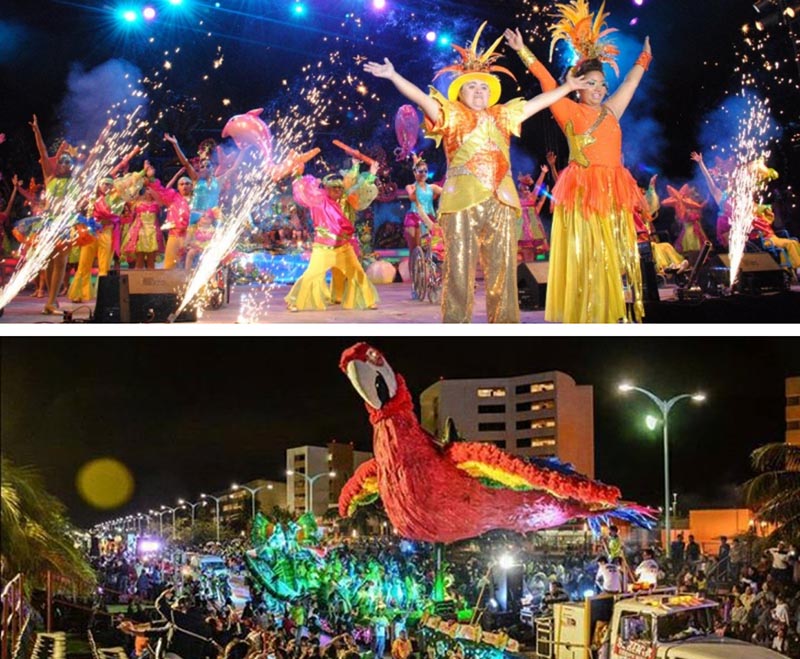
Culinary Delights of Mexican Carnival
Traditional Carnival foods
Food plays a significant role in Mexican Carnival, with a variety of traditional dishes and treats that are enjoyed during the festive season. These culinary delights are deeply rooted in Mexican culture and showcase the country’s diverse flavors and culinary traditions.
One classic Carnival dish is the “tamales,” which are made from masa (corn dough) and filled with a variety of savory ingredients, such as meat, cheese, or vegetables. Tamales are a staple of Mexican cuisine and are often enjoyed during special occasions, including Carnival.
Another popular dish is the “mole,” a rich and flavorful sauce made from a complex blend of spices, chili peppers, and chocolate. Mole is often served over chicken or turkey and is a quintessential part of Mexican cuisine. During Carnival, it is not uncommon to find stalls and food vendors serving delicious mole dishes to hungry revelers.
Regional specialties and treats
Every region in Mexico has its own culinary specialties and Carnival treats that are eagerly anticipated by locals and visitors alike. In Veracruz, for example, seafood takes center stage, with dishes like “pescado a la veracruzana” (Veracruz-style fish) and “ceviche” being popular choices for Carnival feasts.
In Mazatlán, the coastal location provides an abundance of fresh seafood, including mouthwatering shrimp and fish tacos. These delights are often accompanied by salsas made from local ingredients like chilies, tomatoes, and lime juice, adding a burst of flavor to every bite.
In the Yucatan Peninsula, the traditional “cochinita pibil” (pork marinated in achiote) is a must-try Carnival dish. This flavorful and tender meat is usually served in tacos or tortas, accompanied by pickled onions and fiery habanero sauce.
Popular drinks and cocktails
To wash down all the delicious food, Mexican Carnival offers a range of refreshing beverages and cocktails that are perfect for quenching thirst and adding to the festive atmosphere. One iconic drink is the “michelada,” a concoction made with beer, lime juice, hot sauce, and spices. It is a popular choice during Carnival, as it combines the refreshing qualities of a cold beer with the zesty flavors of traditional Mexican ingredients.
Another beloved beverage is the “agua fresca,” a refreshing fruit-infused water that comes in a variety of flavors, such as watermelon, Jamaica (hibiscus), and tamarind. Agua fresca is a popular choice for those looking for a non-alcoholic option during Carnival, as it provides a delicious and cooling alternative to sodas and sugary drinks.
For those looking for something stronger, Mexican Carnival offers a wide range of cocktails and spirits to enjoy. Classic options include the “margarita,” the “paloma,” and the “tequila sunrise,” all of which showcase Mexico’s famed tequila and mezcal.
Carnival Games and Activities
Traditional games played during Carnival
In addition to the lively music, dance performances, and delicious food, Mexican Carnival also offers a range of games and activities that add to the festive atmosphere. These traditional games serve to entertain both children and adults, providing a fun and interactive experience for everyone.
One popular game is “la lotería,” a traditional Mexican bingo game played with cards depicting colorful images rather than numbers. Players mark off the images on their cards as they are called out, competing to be the first to complete a line or a full card.
Another classic Carnival game is the “carreras de costales” (sack race), where participants hop inside large sacks and race against each other to reach the finish line. This hilarious event often results in laughter and cheer as participants struggle to maintain their balance and compete for first place.
Family-friendly activities and attractions
Mexican Carnival is a family-friendly affair, with activities and attractions that cater to all age groups. From face painting booths and craft workshops to puppet shows and storytelling sessions, there are plenty of opportunities for children to have a memorable and enjoyable experience during Carnival.
In addition to the traditional games, amusement rides are also an integral part of Mexican Carnival. Ferris wheels, carousels, and roller coasters can be found in many carnival venues, providing thrills and excitement for both children and adults alike. These rides offer a break from the festive chaos and allow visitors to enjoy a different aspect of the celebrations.
Thrilling rides and amusement park experiences
For those seeking a more adrenaline-fueled experience, Mexican Carnival also offers a range of thrilling rides and amusement park experiences. Carnival venues often feature large-scale attractions, such as roller coasters, drop towers, and spinning rides, that cater to thrill-seekers looking for an adrenaline rush.
These rides are meticulously designed to provide a mix of excitement, speed, and breathtaking views, providing visitors with an unforgettable experience. From being launched into the air on a bungee jump ride to racing through loops and twists on a roller coaster, there is something to satisfy even the most daring carnival-goer.
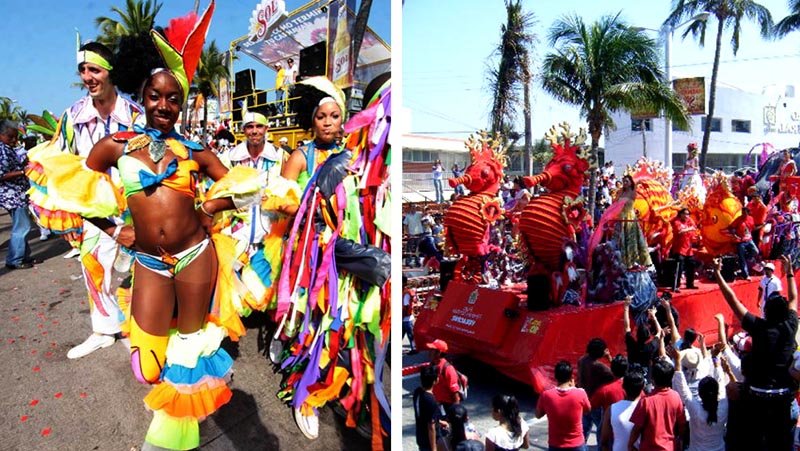
Key Dates and Schedule
Carnival season in Mexico
The Carnival season in Mexico typically begins in January or February and lasts until the beginning of Lent, culminating with the grandest celebrations taking place in the week leading up to Ash Wednesday. The exact dates for Mexican Carnival can vary from year to year, as they are determined by the ecclesiastical calendar.
Carnival season brings together people from all walks of life, with locals and tourists alike eagerly anticipating the festivities. From small rural communities to large urban centers, Mexican Carnival is celebrated with great enthusiasm and joy, showcasing the diversity and richness of Mexican culture.
Important dates and calendar of events
Each Mexican city or town has its own schedule of events and activities during Carnival season, so it is advisable to check the specific dates for the destination you plan to visit. However, there are some key events that are commonly celebrated across the country.
The “Quema del Mal Humor” (Burning of Bad Mood) is a popular event that marks the beginning of Mexican Carnival. This symbolic ritual involves the burning of an effigy that represents negative emotions and bad luck, allowing participants to start the festivities with a fresh and positive outlook.
Other important events include the crowning of the Carnival King and Queen, the showcasing of elaborate floats during the street parades, and the selection of the best costume and mask designs. These events create a sense of anticipation and excitement, setting the stage for the vibrant and captivating celebrations to come.
Tips for planning a visit during Carnival
If you plan to attend Mexican Carnival, it is advisable to plan your trip in advance and make necessary arrangements to ensure a smooth and enjoyable experience. Here are some tips to help you make the most of your Carnival visit:
-
Research the specific dates and schedule of events for the destination you plan to visit, as each region may have its own unique customs and traditions.
-
Book your accommodations well in advance, as popular Carnival destinations tend to experience high demand during the festivities.
-
Pack comfortable clothing and shoes, as Carnival celebrations often involve walking, dancing, and spending long hours outdoors.
-
Familiarize yourself with local customs and etiquette, as Carnival is a time of celebration and respect for cultural traditions.
-
Be prepared for large crowds and expect traffic congestion, as Carnival attracts a significant number of visitors.
-
Stay hydrated and apply sunscreen, as Carnival celebrations can take place under the sun for extended periods of time.
-
Keep an open mind and embrace the spirit of Carnival, as it is a time to let go of inhibitions, immerse yourself in the festivities, and create lasting memories.
Community Participation and Social Significance
Involvement of local communities
Mexican Carnival is not just about the costumes, music, and dance performances; it is also a celebration that brings communities together and fosters a sense of unity and belonging. Local communities play an integral role in the organization and execution of Carnival events, creating a shared experience that strengthens social bonds and cultural identity.
From the artisans who create the elaborate costumes and masks, to the musicians who perform in the bands, to the organizers who coordinate the street parades and festivities, Mexican Carnival is a product of community effort and participation. It offers an opportunity for individuals to contribute their skills, creativity, and passion to create a vibrant and memorable celebration.
Role of Carnival in cultural preservation
Mexican Carnival also serves as a means of cultural preservation, helping to keep traditional customs, music, and dance forms alive. The celebration acts as a platform for passing on cultural knowledge and practices from one generation to the next, ensuring that Mexico’s rich heritage is preserved and respected.
Through the creation and wearing of traditional costumes, the performance of folk dances, and the playing of traditional music, Mexican Carnival allows younger generations to develop a deeper appreciation for their cultural roots and traditions. This serves as a powerful tool for cultural transmission and helps to nurture a sense of pride and identity within local communities.
Carnival’s impact on tourism and economy
Mexican Carnival has a significant impact on tourism and the economy, drawing visitors from all over the world who are eager to experience the vibrant festivities and immerse themselves in Mexican culture. The influx of tourists during Carnival season stimulates local businesses, from hotels and restaurants to artisans and vendors who sell traditional crafts and souvenirs.
Carnival celebrations create employment opportunities for local communities, as they require a range of services, including event organizing, security, transportation, and entertainment. The economic benefits extend beyond the duration of the festivities, as tourists often explore other attractions and regions in Mexico, contributing to the overall growth of the tourism industry.
The social and economic impact of Mexican Carnival not only supports local communities but also raises awareness and appreciation for Mexico’s rich cultural heritage, encouraging the preservation and promotion of traditional customs and practices.
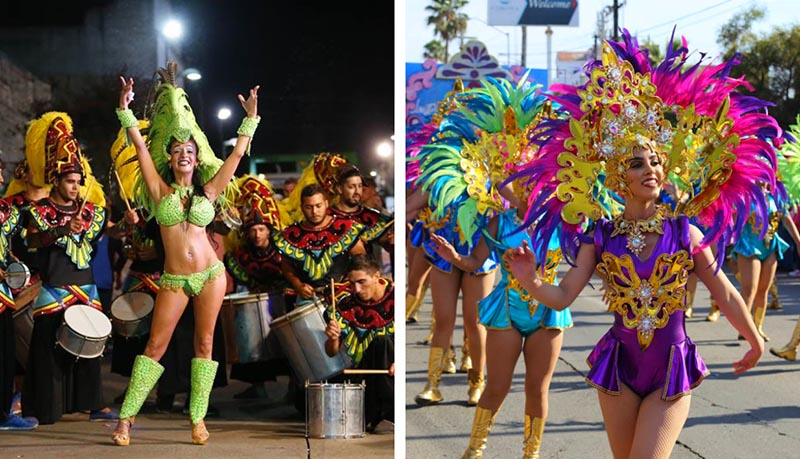
Safety and Security Measures
Tips for staying safe during Carnival
While Mexican Carnival is a time of joy and celebration, it is always important to prioritize personal safety and be aware of potential risks. Here are some tips to help you stay safe during Carnival:
-
Keep your belongings secure at all times, as crowded events can be a target for pickpockets. Use a bag with a secure closure and avoid carrying unnecessary valuables.
-
Stay in well-lit and populated areas, especially during nighttime festivities. Travel in groups whenever possible and avoid isolated or unfamiliar areas.
-
Stay hydrated and take breaks from the sun, as Carnival celebrations often involve spending prolonged periods of time outdoors. Wear sunscreen and protective clothing to prevent sunburn.
-
Familiarize yourself with emergency contact numbers and the location of nearby medical facilities or police stations. Be prepared for minor injuries or illnesses and carry a small first aid kit.
-
Follow any safety instructions or guidelines provided by event organizers, security personnel, and local authorities. These measures are in place to ensure the safety and well-being of all participants.
-
Be mindful of your alcohol consumption and drink responsibly. Know your limits and watch out for excessive alcohol consumption, as it can impair judgment and increase the risk of accidents or incidents.
Organized security arrangements
In order to ensure the safety of participants, many Mexican Carnival venues have organized security arrangements in place. These arrangements can include a combination of police presence, private security personnel, and surveillance measures to maintain order and prevent any potential disruptions.
It is advisable to cooperate with security personnel, follow their instructions, and be attentive to any announcements or alerts that may be issued during the festivities. By being aware of your surroundings, practicing caution, and reporting any suspicious activities, you can play a role in maintaining a safe and enjoyable environment for all attendees.
Advice for tourists and first-time attendees
If you are a tourist or attending Mexican Carnival for the first time, it is important to familiarize yourself with the local customs and cultural norms to ensure a positive and respectful experience. Here are a few tips for tourists and first-time attendees:
-
Dress appropriately and respect any dress codes or guidelines that may be in place for certain events or venues. Be mindful of the cultural significance of traditional costumes and masks, and avoid appropriating or misrepresenting any cultural symbols.
-
Learn a few basic phrases in Spanish, as it can help you navigate and interact with locals more easily. Locals will appreciate your efforts to communicate in their native language.
-
Seek local recommendations for the best places to eat, drink, and experience Carnival. Locals often have insider knowledge and can provide valuable insights that may not be readily available to tourists.
-
Be respectful of personal space and cultural boundaries, as Mexican Carnival can be a crowded and lively affair. Practice patience and be mindful of the comfort and safety of those around you.
By being respectful, curious, and open-minded, you can fully immerse yourself in the spirit of Mexican Carnival and create lasting memories of this vibrant celebration.
Sustainability and Environmental Considerations
Efforts for sustainable carnival celebrations
In recent years, there has been an increasing focus on sustainability and environmental considerations in Mexican Carnival celebrations. Event organizers, communities, and participants are taking steps to reduce the impact of Carnival on the environment and promote eco-friendly practices.
Efforts include the use of biodegradable or eco-friendly materials for costumes and masks, the implementation of recycling programs at Carnival venues, and the promotion of sustainable transportation options, such as public transportation or carpooling, to reduce carbon emissions.
By incorporating sustainable practices into Mexican Carnival, organizers and participants are working towards creating a more environmentally conscious celebration that honors both cultural traditions and the natural beauty of Mexico.
Waste management and recycling initiatives
Waste management and recycling initiatives are becoming more prevalent in Mexican Carnival celebrations, aiming to minimize the environmental impact of the festivities. Event organizers are implementing waste separation systems, providing clearly labeled recycling bins, and promoting responsible disposal of waste materials.
Participants are also encouraged to be mindful of their own waste generation and dispose of their garbage in designated bins. By raising awareness about the importance of responsible waste management, Mexican Carnival organizers and participants are actively contributing to the sustainability of this cultural event.
Promotion of eco-friendly practices
In addition to waste management and recycling, Mexican Carnival organizers and communities are promoting a range of eco-friendly practices to reduce the overall environmental footprint of the festivities. These practices include the use of energy-efficient lighting, the reduction of single-use plastics, and the incorporation of sustainable food and beverage options.
Furthermore, some festivities are exploring alternative energy sources, such as solar power, to minimize dependence on non-renewable resources. By embracing these eco-friendly practices, Mexican Carnival is setting an example for sustainable event management and contributing to the broader movement for a greener and more sustainable future.
In conclusion, Mexican Carnival is a celebration that embodies the spirit and diversity of Mexican culture. From its ancient indigenous roots to the influence of European Carnival traditions, Mexican Carnival has evolved into a vibrant and captivating event that brings communities together and showcases the country’s rich cultural heritage.
Festivities and locations, traditional costumes and masks, music and dance, culinary delights, traditional games and activities, key dates and schedule, community participation and social significance, safety and security measures, and sustainability considerations all contribute to the unique and memorable experience that is Mexican Carnival. By immersing yourself in the sights, sounds, and flavors of Mexican Carnival, you can create lasting memories and gain a deeper appreciation for the beauty and richness of Mexico’s cultural tapestry.
